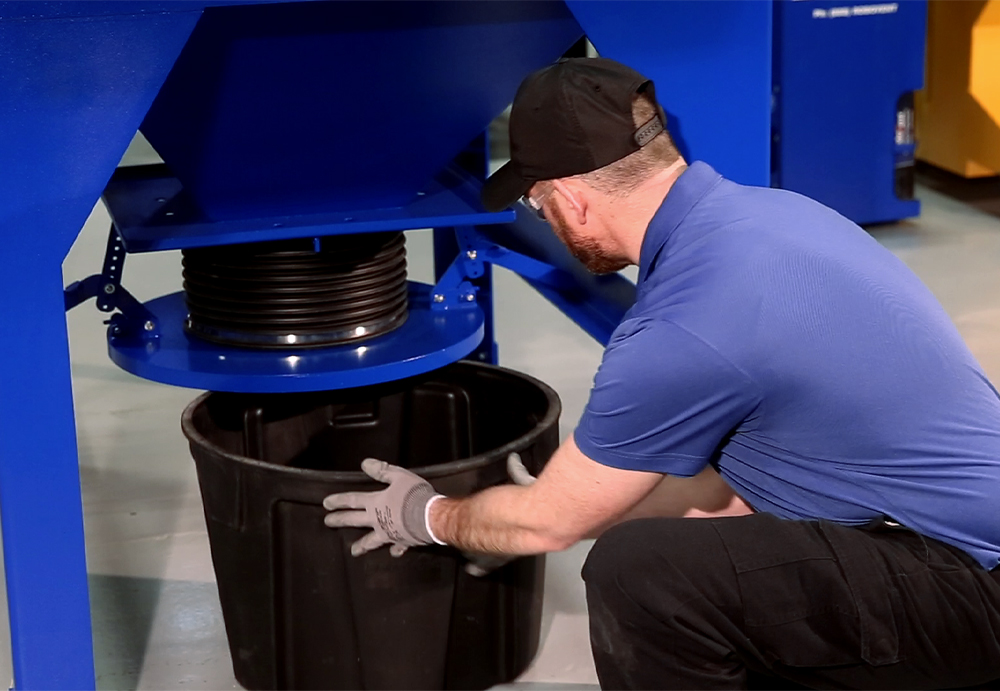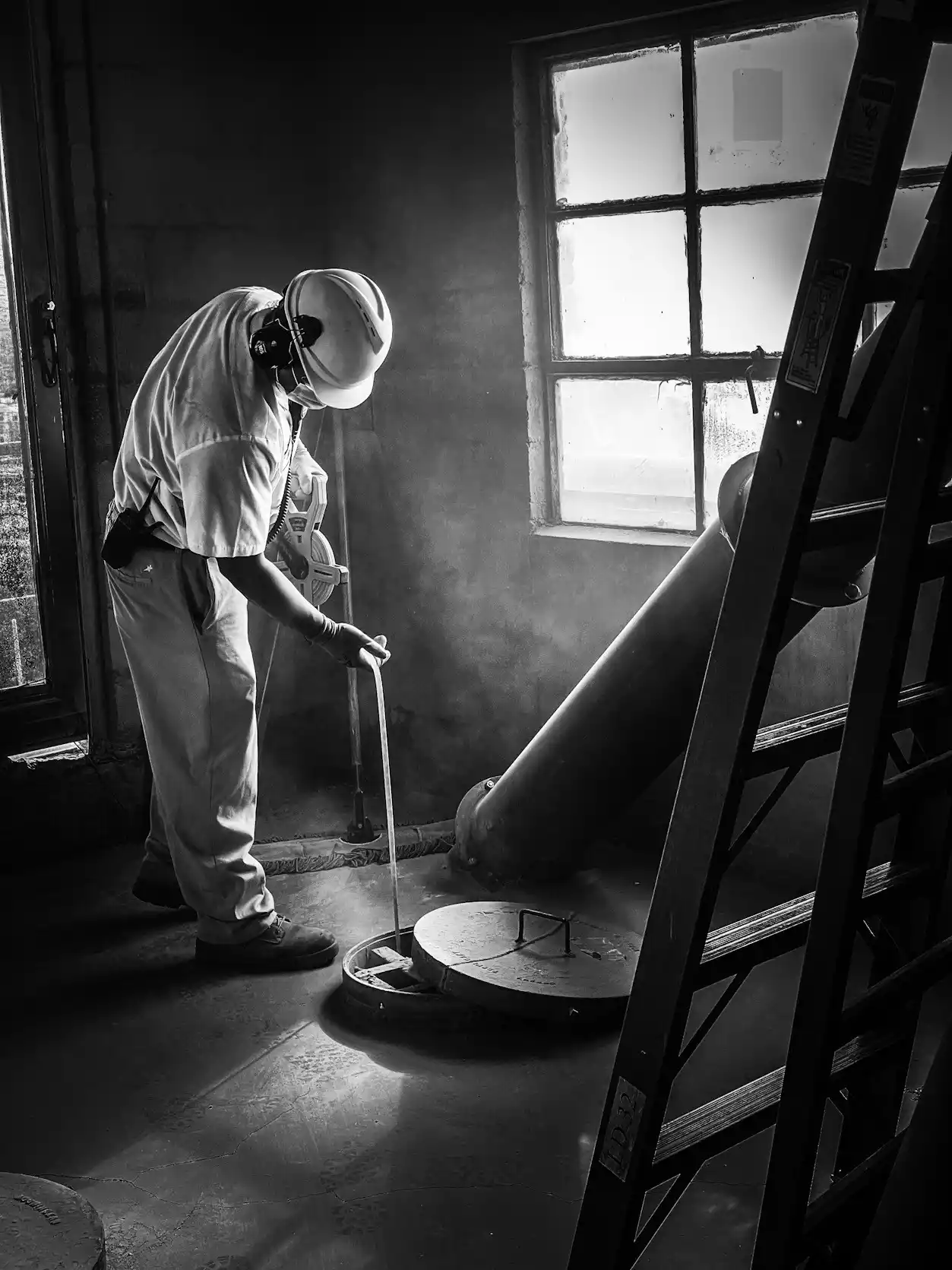Cartridge Dust Collector Maintenance Checklist
 Your cartridge dust collector requires regular maintenance to keep systems running efficiently and effectively. These cartridge dust collector maintenance checklists will help you keep your collector in top condition. Regular maintenance not only extends the life of your equipment but also supports a safe and healthy working environment.
Your cartridge dust collector requires regular maintenance to keep systems running efficiently and effectively. These cartridge dust collector maintenance checklists will help you keep your collector in top condition. Regular maintenance not only extends the life of your equipment but also supports a safe and healthy working environment.
Not sure whether to do it yourself or outsource dust collector preventive maintenance? Check out the pros and cons: DIY vs. Outsource Maintenance.
Elements of Dust Collector Maintenance
A dust collector works by drawing in contaminated air through a filtering system where dust and particulate matter are captured. The clean, filtered air is then either recirculated back into the environment or expelled outside. This process is facilitated by a fan or blower within the collector. As the air passes through filters, usually made of fabric or other filtering materials, the dust particles are trapped, and the air is purified. The collected dust is then removed and disposed of, typically into a bin or a removal system.
While the system is not overly complex, there are a number of components that require maintenance, including the filters, the filter pulsing system (which includes compressed air), the motor/blower, the dust containment and disposal system, dampers and valves that regulate airflow, electronic controls, and the overall housing and supports. Essential elements of dust collector maintenance include:
- Filter Maintenance: Regular inspection, cleaning, and replacement of filters are essential maintenance tasks. Filters are the heart of a dust collector system, and their condition directly impacts the system's efficiency.
- Inspection and Cleaning of Internal Components: Checking and cleaning fans, motors, and other internal parts. Accumulated dust can cause these components to work inefficiently or fail.
- Airflow Monitoring: Ensuring that the airflow remains within the recommended parameters is essential for efficient operation. Changes in airflow can indicate issues such as filter clogging or leaks.
- Leak Checks: Regularly inspecting the system for leaks in the ductwork, housings, and airlocks. Leaks can reduce the efficiency of the system and allow dust to escape into the work environment.
- Dust Removal and Disposal: Properly and safely removing and disposing of collected dust. This is important for maintaining system efficiency and preventing secondary dust hazards.
- Maintenance of Cleaning Systems: For systems with automatic cleaning features, such as pulse-jet mechanisms, regular checks and maintenance of these systems are crucial to ensure they function correctly.
- Checking and Replacing Worn Parts: Regularly inspecting and replacing worn or damaged components like valves, seals, and gaskets to maintain system integrity and performance.
- Control System Checks: Testing the control systems and sensors to ensure they are functioning correctly and making adjustments as needed.
- Safety System Checks: These include safety stops, smoke detectors, fire suppression system, spark arrestors and other safety components.
Dust Collector Maintenance Checklists

Maintenance requirements will vary based on your dust collector make and model, operating conditions and dust load. Consult your User's Manual for model-specific recommendations. The following maintenance checklists provide a rough guide of activities necessary to maintain your cartridge dust collector.
Daily
- Dust Disposal: Check dust levels and safely remove and dispose of dust from the collection bin as needed.
- Monitor Pressure Gauge: Check the differential pressure gauge to ensure it's within the recommended range. If the pressure differential is high, perform a manual pulse to see if pressure drop can be brought down below 2 kPa. If pressure cannot be brought down below 2 kPa with pulsing, schedule a filter change.
- Review Alerts: Check the control system for any active alerts or alarms and follow instructions to clear them if necessary.
Weekly
- Filter Inspection: Examine the filters for any signs of clogging or damage, such as pinhole leaks or tears.
- Inspect Gaskets and Seals: Look for any deterioration or leaks.
- Pulse System: Perform a manual pulse to ensure that the filter pulsing system is working correctly. Check the air pressure (PSI) for the compressed air system that powers the pulse valves.
- Check Airflow: Verify that the airflow through the system is consistent and unobstructed.
- Visual Inspection and Cleaning: Check for any visible signs of damage or wear on the exterior of the collector, collector intake and ductwork. Clean the intake and external surfaces of the collector and surrounding area.
Monthly
- Filter Inspection and Replacement: Perform a detailed inspection of the filters and clean or replace as needed. Filters will generally need to be replaced if they cannot be brought below 2.0 kPa with filter pulsing and/or show visible signs of wear or damage. (See your user manual for unit- and filter-specific operating ranges.)
- Check and Clean Pulse Valves: Inspect and clean the pulse valves and other related components.
- Check Safety Systems: Check and clean the spark arrestance system, if present. Ensure that the smoke detector, automated damper system, and/or emergency stop are working correctly. If the unit has an internal fire suppression system, inspect for signs of wear or damage and check system pressure (if applicable).
- Examine Hoppers: Ensure that the dust is flowing properly into the hoppers and there's no buildup in the filter chambers.
- Review Maintenance Records: Update and review the maintenance logs to track the health of the system.
Quarterly
- Dust Collector Fan Inspection: Check the fan and motor for wear, proper alignment, and tension.
- Airlock System Check: Inspect and service the airlock system between the hopper and collection bin, if present, to ensure efficient operation.
- Bearing and Drive System Inspection: Examine and lubricate bearings and drive systems as required.
- Control System Check: Test the control system and sensors for proper functionality.
- Ductwork: Inspect ductwork and clean/clear blockages if necessary. If dust is building up inside the ductwork, check to ensure that the system is maintaining proper air velocity for the application.
Annually
- Comprehensive System Audit: Conduct a full system audit, including airflow readings, system balance, and efficiency analysis.
- Replace Worn Components: Identify and replace any worn or damaged components, such as filters, gaskets, and seals.
- Professional Inspection: Consider scheduling a professional inspection to identify any potential issues that may have been overlooked.
- Update Maintenance Plan: Review and update the maintenance plan based on the past year's findings and operational changes.
Schedule Dust Collector Maintenance Today
Don't want to handle dust collector preventive maintenance on your own? No problem. RoboVent can help you keep your dust collector in top condition. Ask us about our extended maintenance contracts.
Contact Us With Your Questions!
SUBSCRIBE TO
BLOG UPDATES









